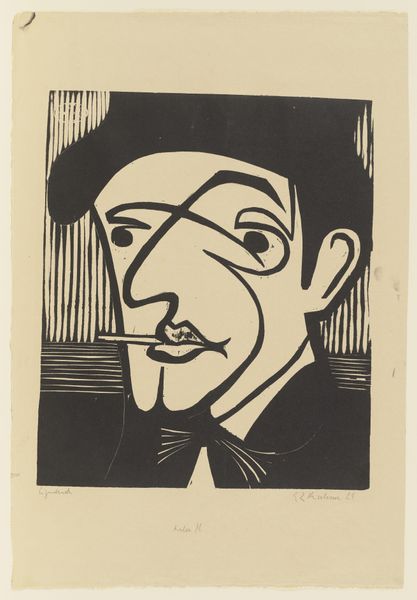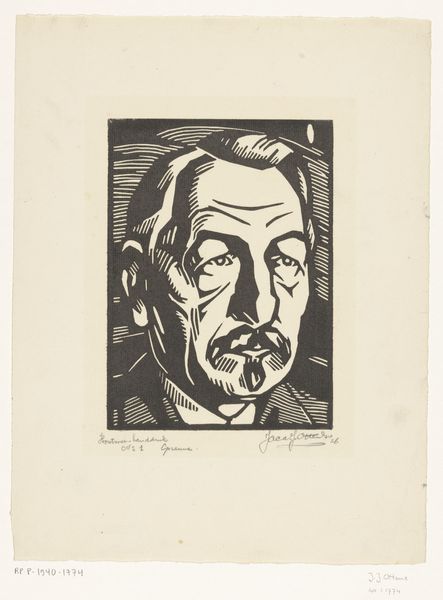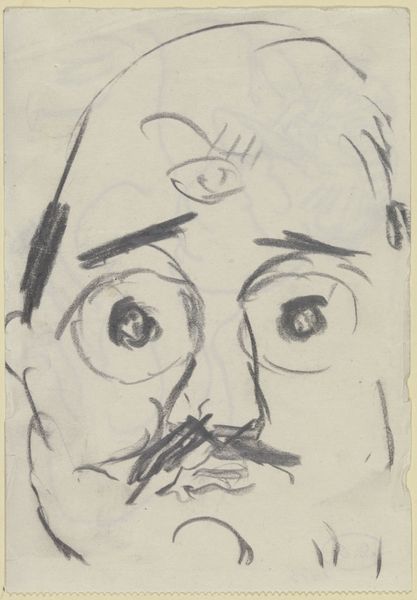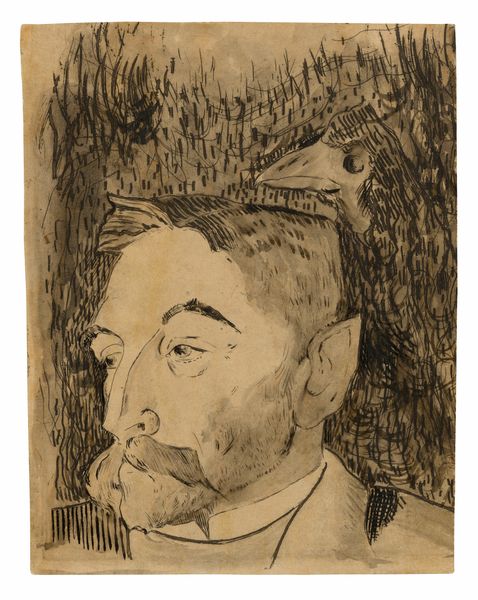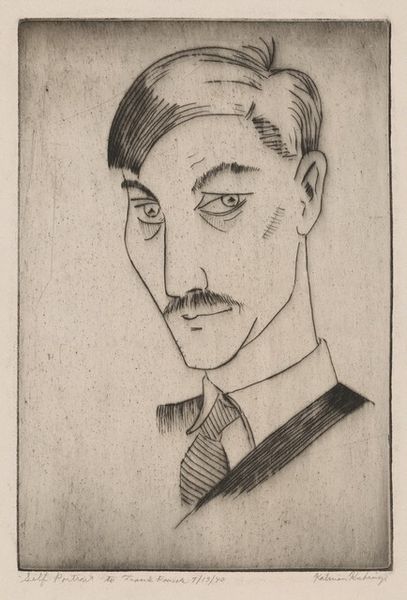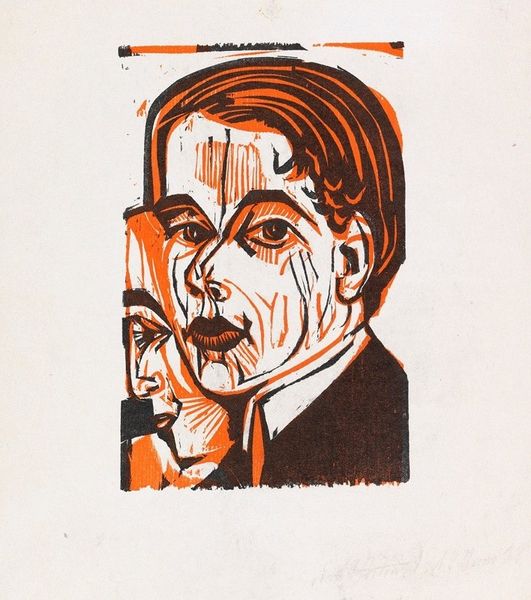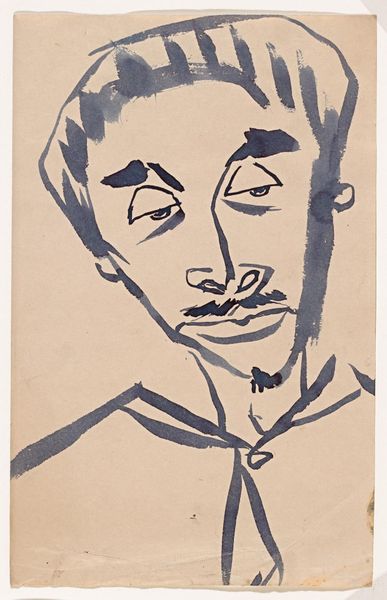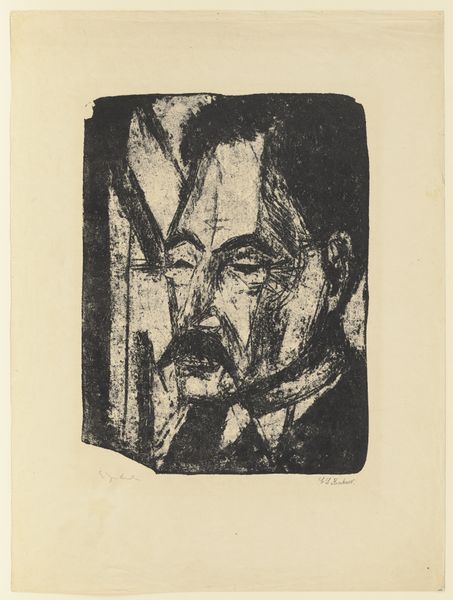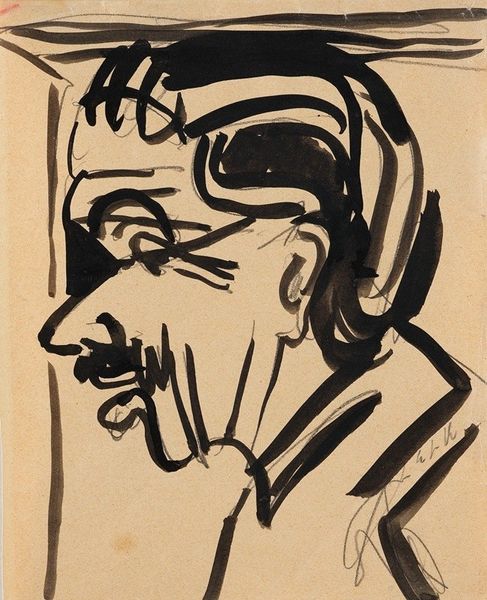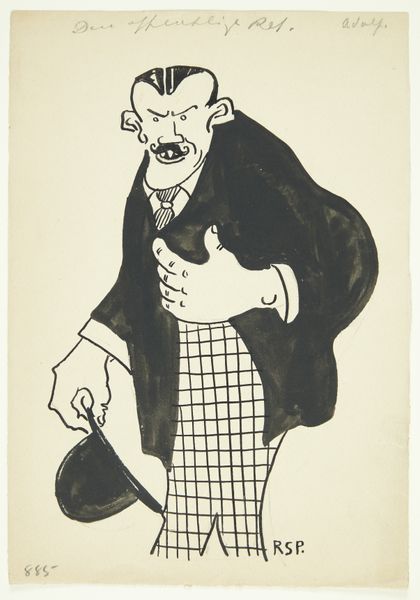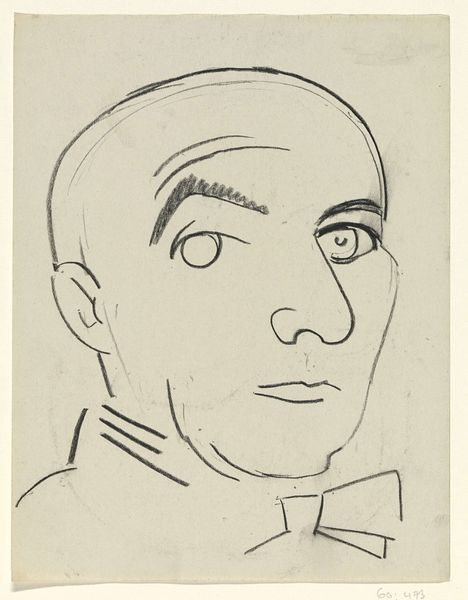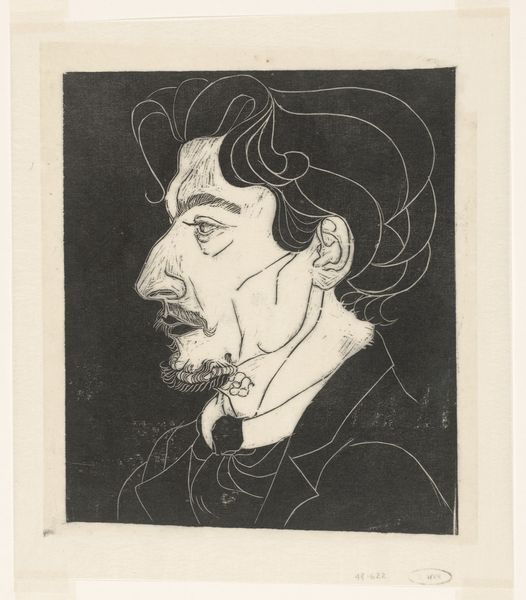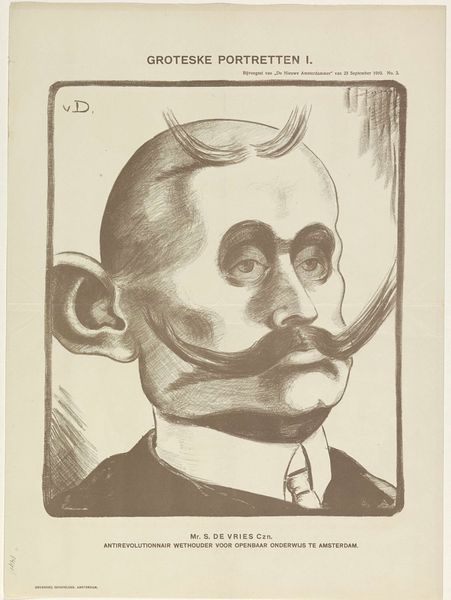
Dimensions: overall: 14.8 x 9.4 cm (5 13/16 x 3 11/16 in.)
Copyright: National Gallery of Art: CC0 1.0
Curator: Here we have Giacomo Balla's "Self-Portrait" from 1917, rendered with pen and ink on paper. It offers a glimpse into the artist’s perception of himself during the height of his involvement with Futurism. Editor: Woah, intense. Right away, I see someone sizing me up with that severe brow and piercing gaze. Is it me, or is there a hint of theatrical menace there? It’s like a silent film villain about to reveal his dastardly plot. Curator: That’s an astute observation. Balla was deeply involved in the Futurist movement, which sought to capture the dynamism and energy of the modern world, but it also leaned heavily into drama and spectacle. It’s also crucial to recognize how this particular depiction exists as caricature—a stylistic tool to amplify a very specific and performative identity, much like his Futurist compatriots. Editor: Performative identity—I like that. There's definitely a contrived quality to it. Like he's posing, playing a part. It's a really exaggerated self-image! You can almost see him relishing the thought of portraying himself with such strong features—those bold lines and heavy inking that bring that scowl to life. What statement was he trying to make, do you think? Curator: Futurism at the time wasn’t simply an aesthetic endeavor, but a wholesale reinvention of society itself, driven by the values of technology and power. Consider Balla's adoption of the 'Balla' name itself; it was a form of branding as if he wanted to encapsulate everything. In this self-portrait, he might be aiming to project himself as a forceful agent of this change—assertive, intellectual, and undeniably modern. Remember, Futurists were very fond of upsetting the establishment. Editor: So, less about inner reflection, more about outward provocation. Interesting! It really captures the Futurist obsession with disrupting norms. Thinking about it that way, I almost get the joke, the playfulness hidden beneath that grim exterior. Maybe it’s less villain, more avant-garde prankster. Curator: Precisely. While on first glance it might appear confrontational, contextualizing it within the Futurist movement sheds light on the social, cultural, and artistic intentions behind its creation. Editor: It’s like shedding light on the face of modern Italy—all those complex social and technological revolutions, captured in ink with one really intense gaze. Well, Balla certainly left an impression, even after all this time. Curator: Indeed. It's a compelling example of how even a seemingly simple self-portrait can reflect larger socio-political and cultural movements, inviting us to reconsider the artist's intentions and legacy.
Comments
No comments
Be the first to comment and join the conversation on the ultimate creative platform.
